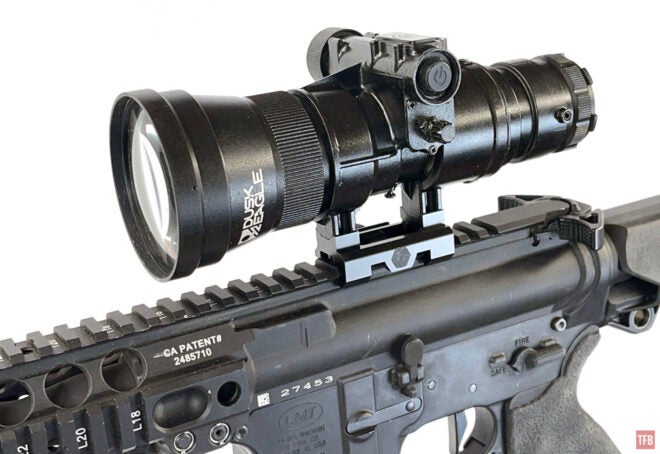Welcome back to Friday Night Lights. Last week I wrote about the AGM TB75, a thermal biocular with digital night vision fusion. Well, digital night vision seems to be getting better and tonight I will show you something new from DuskEagle. The DE916 is a digital night vision scope that is lightweight and can see in the dark better than expected.
Digital Night Vision @ TFB:
- New AGM Neith Digital Night Vision Scope
- Friday Night Lights: SiOnyx OPSIN Review – Digital Night Vision Monocular
- Friday Night Lights: AGM Voyage LRF TB75-640 Thermal Fusion Biocular
DuskEagle DE916

This is a pre-production sample so it is a bit rough looking. The finish on the scope looks like those inexpensive Russian optics that have a wrinkle-like paint. DuskEagle also uses Phillips screws which is not usually seen in quality optics.


The battery compartment is at the top. It holds an 18650 perpendicular to the scope and rifle you mount it on so the battery is not bouncing due to recoil. The DE916 will run for 14 hours on a fully charged battery.

The controls are rather simple. There is a power button and a knob below that. The knob is rotated and pressed in to select options in the onscreen display menu.

There is a Wi-Fi module on top of the 18650 battery compartment.

There is a generic Picatinny mount under the DuskEagle DE916.

The mount only has a single cross bolt as a recoil lug.

You can unbolt this mount for a different one. The DuskEagle comes with a dedicated mount for the QBZ service rifle.

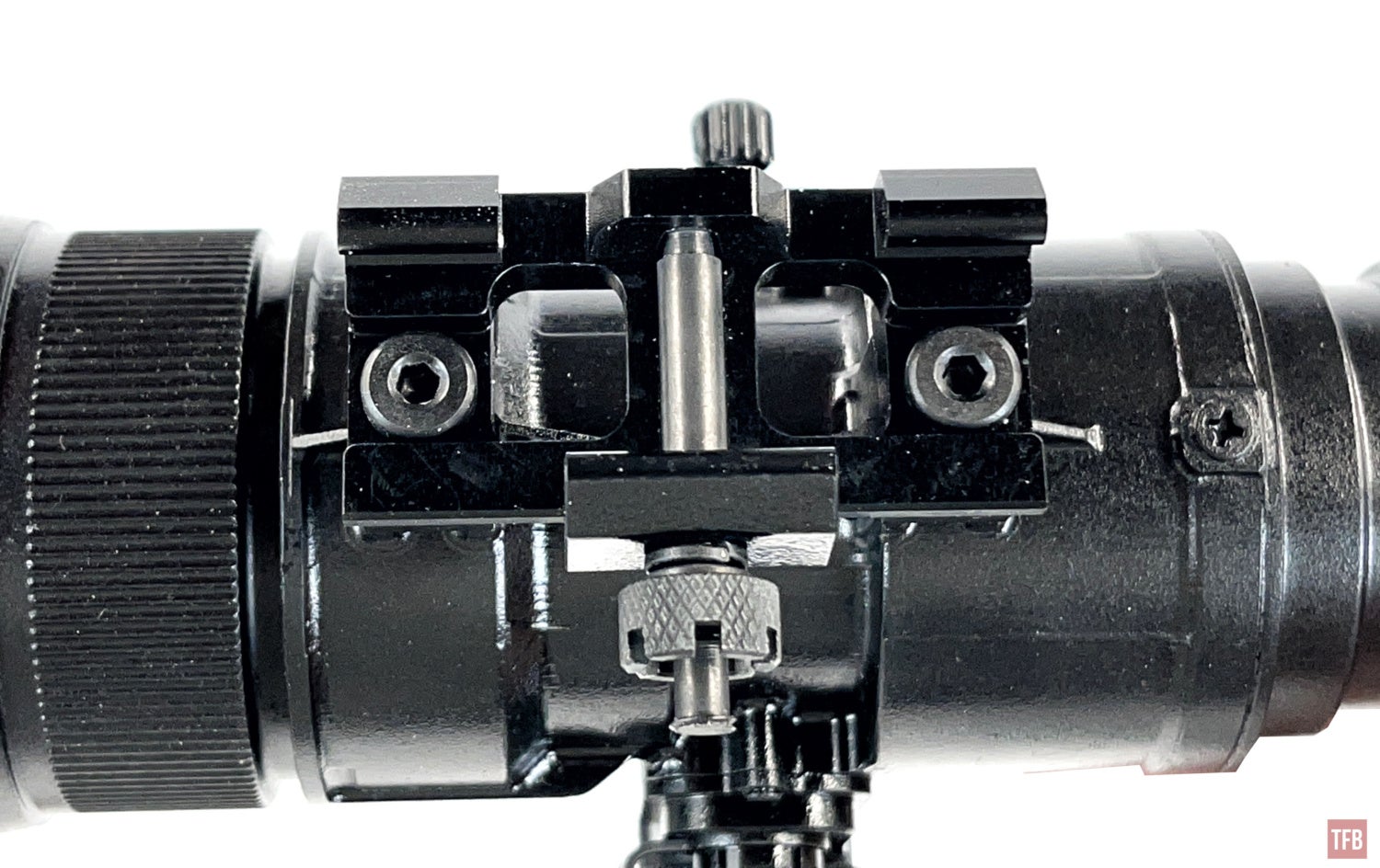
Here is the DE916 mounted on my LMT pistol. You can see how thin the legs above the mount appear. This does not seem that robust.
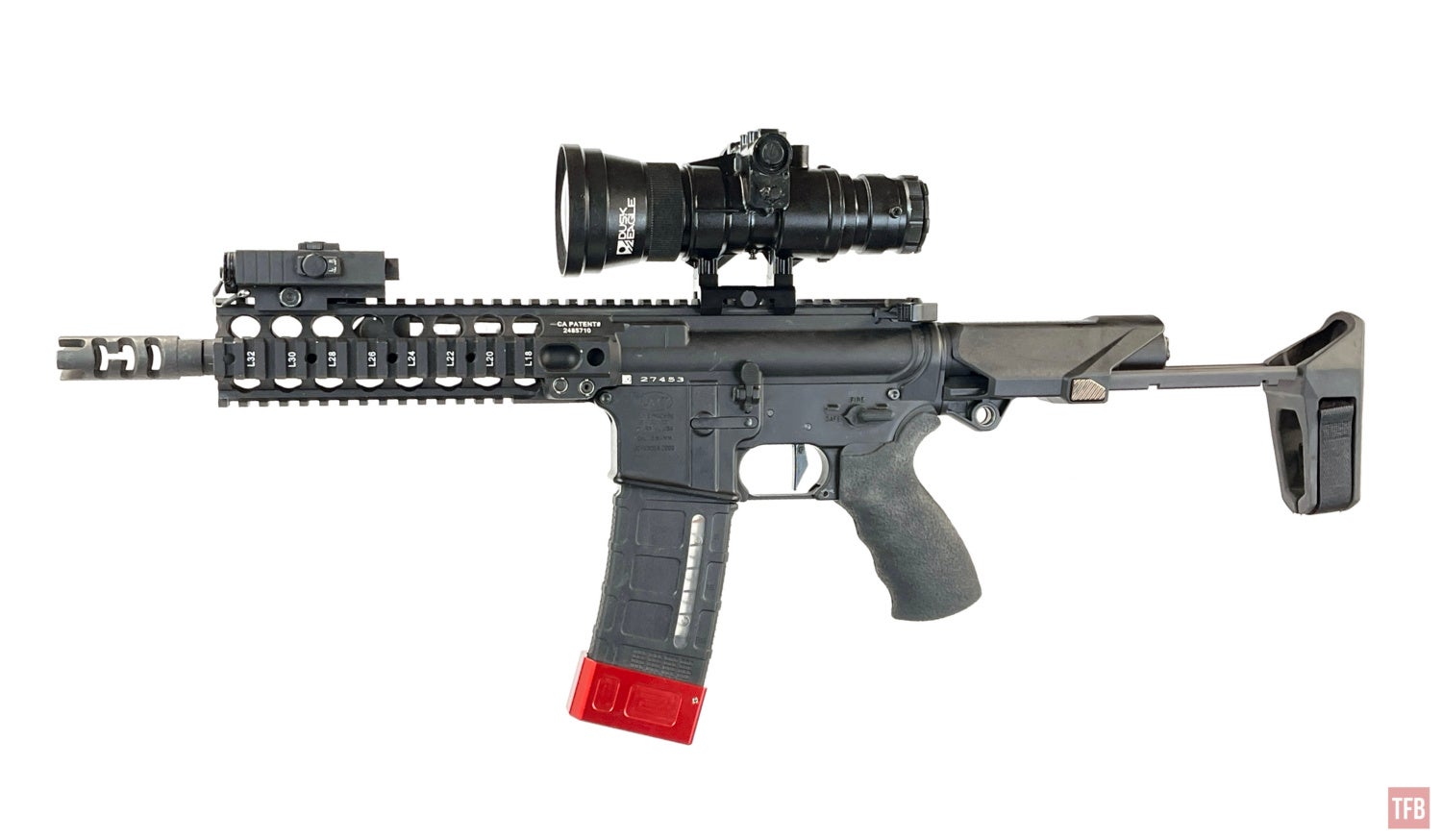
On the right-hand side is the battery cap. This DuskEagle DE916 battery cap has a protrusion for a tether but there was none with this sample. Below the battery cap is a data port for the video out cable and auxiliary power for the AC adapter.
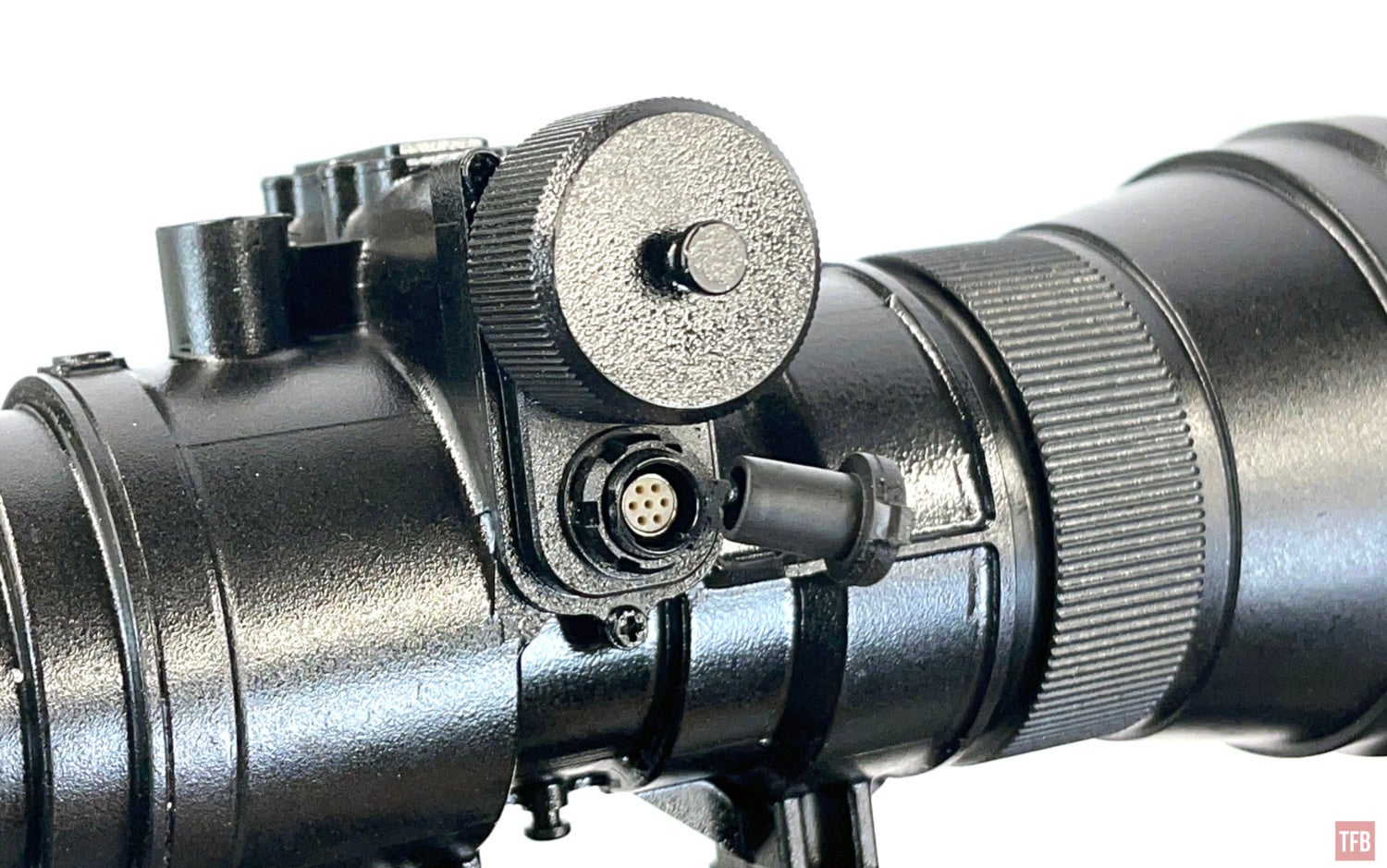
The DuskEagle is considerably lightweight, 1 lb 3.2 oz.
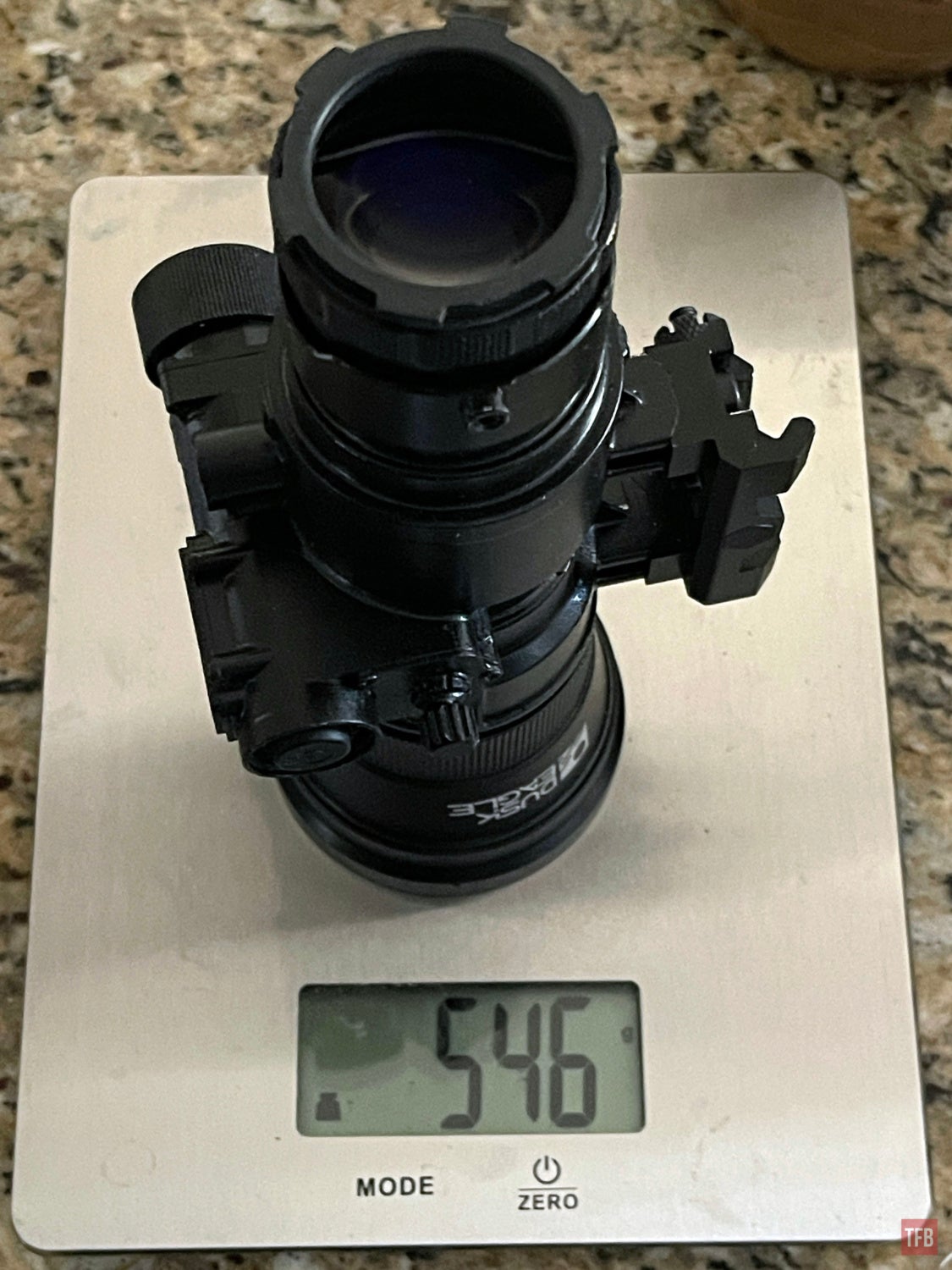
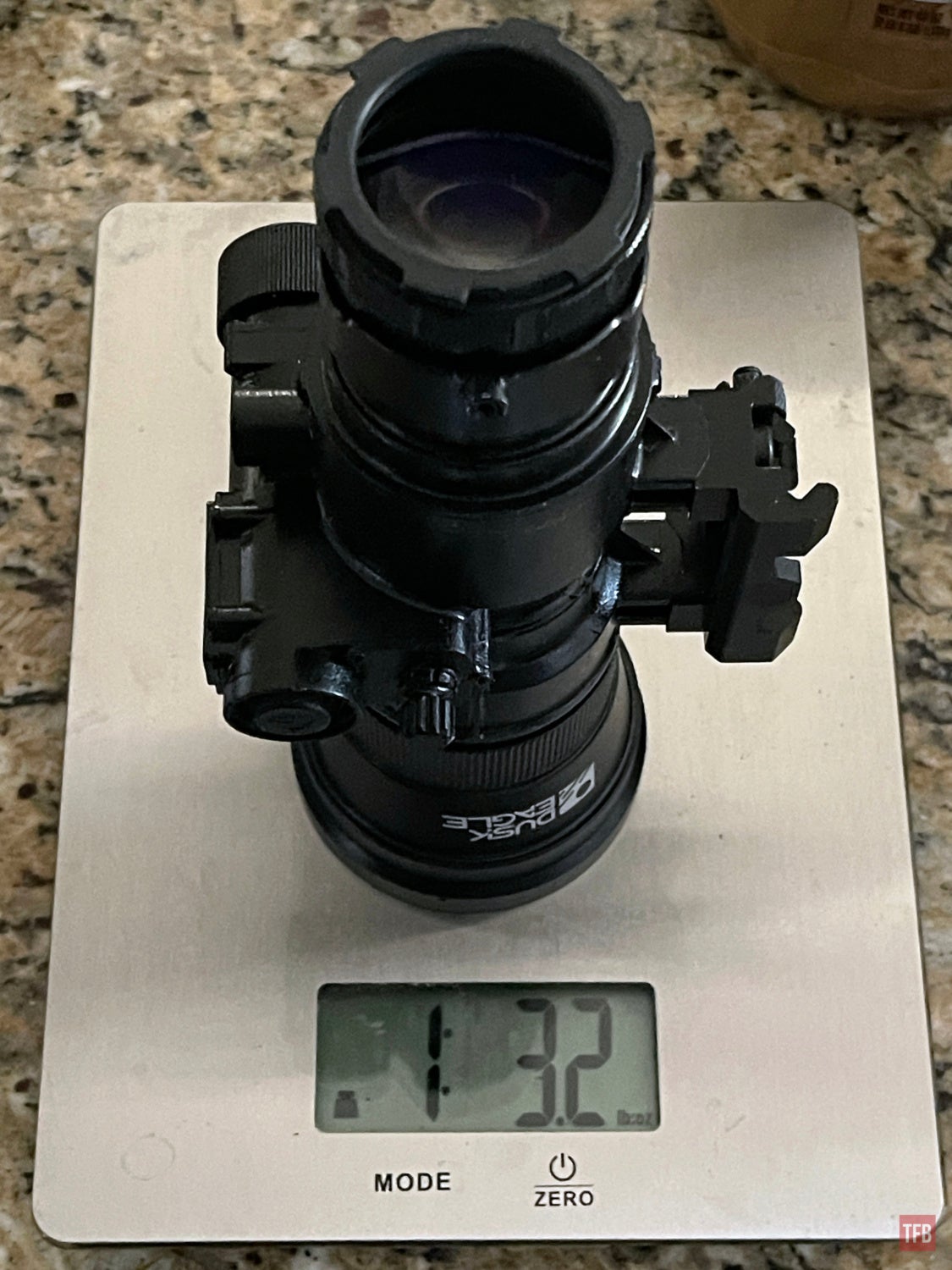
Using The DuskEagle
When you press the menu button/dial there are five options. Rotate the knob to cycle through the options. Press to choose the option and rotate the knob to change the setting.
- Local Enhancement (this does not seem to do anything)
- Display Brightness
- Gain/Contrast
- Video Out
- Wi-Fi
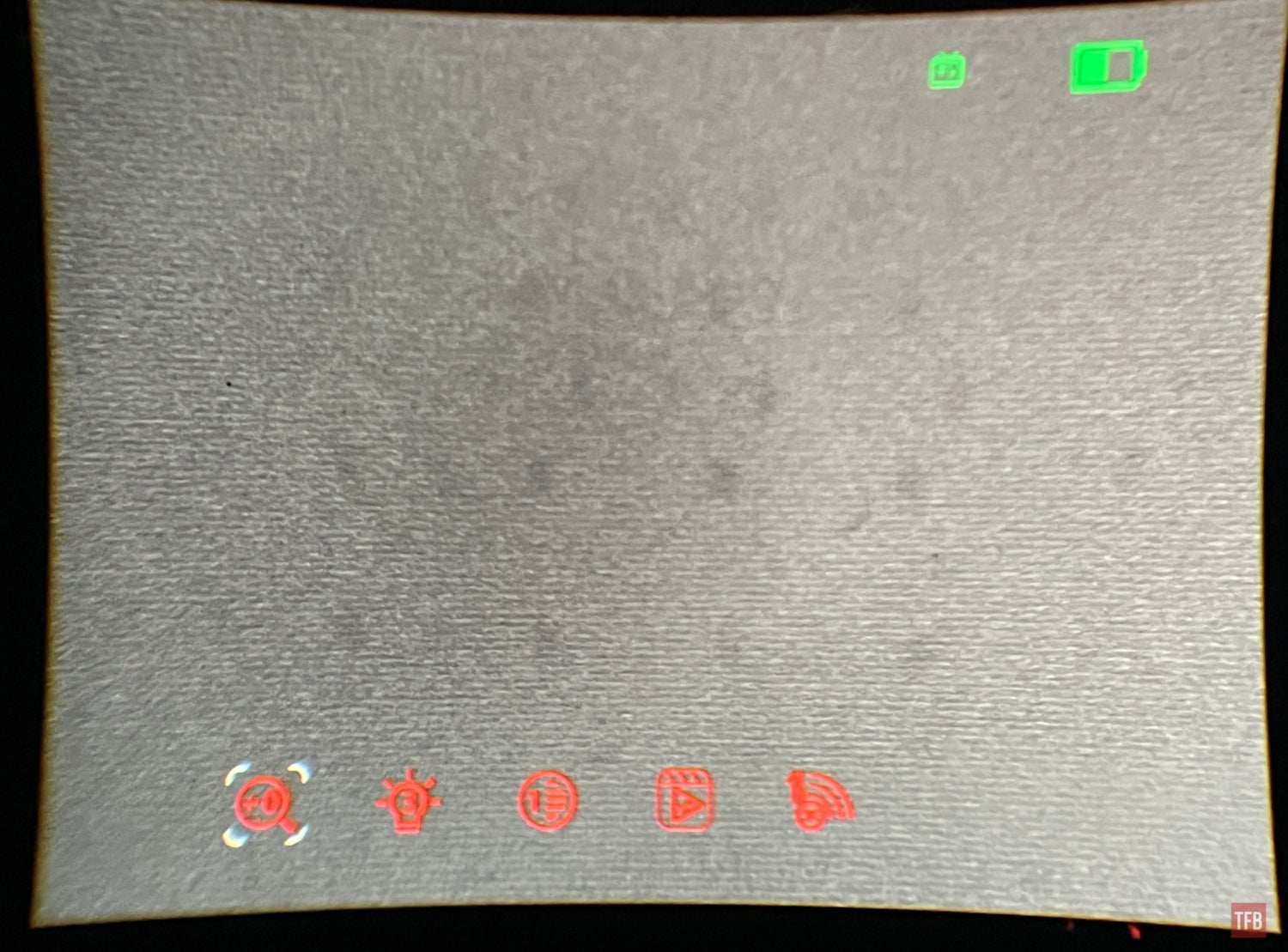
If you rotate past the Wi-Fi option, a second group of options shows up.
- Auto/Manual Exposure (I have not figured out how to adjust manual exposure)
- Elevation Adjustment for Reticle
- Windage Adjustment for Reticle
- Reticle color (red, blue, or green)
- Reticle brightness (you can disable the reticle as well)

Here is a screenshot I grabbed from the video out. The transmission tower is over 600 yards away. The water tower behind it is one mile away. This was taken at night. There is a lot of ambient light from the streetlights.

However, as I expected with digital night vision, it has a problem with high dynamic range. It cannot see past this giant ball of light produced by the headlights of the car a couple hundred yards away. One minor issue with the video out is that it does not show the on-screen display menu options. While the reticle does show, the video output is monochromatic.
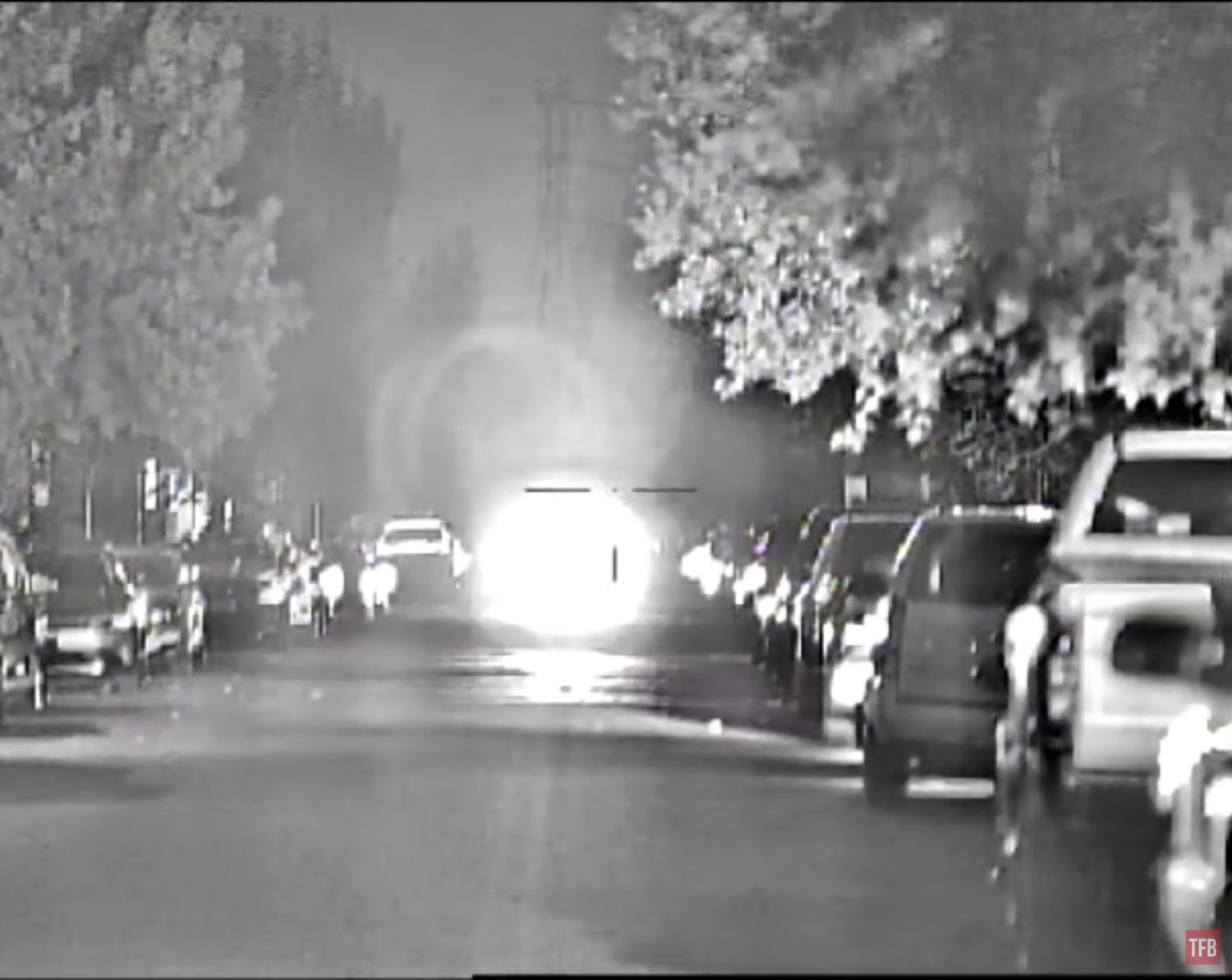
What surprised me the most was its low-light performance. Here is a photo taken with my iPhone looking into the eyepiece. This was around 9 p.m. at the range with cloud cover. No moon. The gain was cranked all the way up and I did not think of adjusting it at the time. But you can see that black rectangle in the middle. Behind it is a conex box about 476 yards away. The image looks a little bit clearer to the naked eye. However, the exit pupil of the eyepiece is very narrow. If you are off just a little bit, there is massive image distortion.

Here you can see the image distortion in the photo I took in the daytime. My friend Vic is standing in front and I have the objective focus set to down range. The DuskEagle has a rather shallow depth of field. Somewhat like analog night vision, you can focus down range or focus on what is close to you. But you will not have both in focus. Adjusting the focus is a bit annoying. The threads are really fine so it takes multiple revolutions of the lens to go from near to far focus and back.

Here is another photo taken through the eyepiece. This is 1:30 a.m. at night but with a near full moon. The shed is 530 yards away.
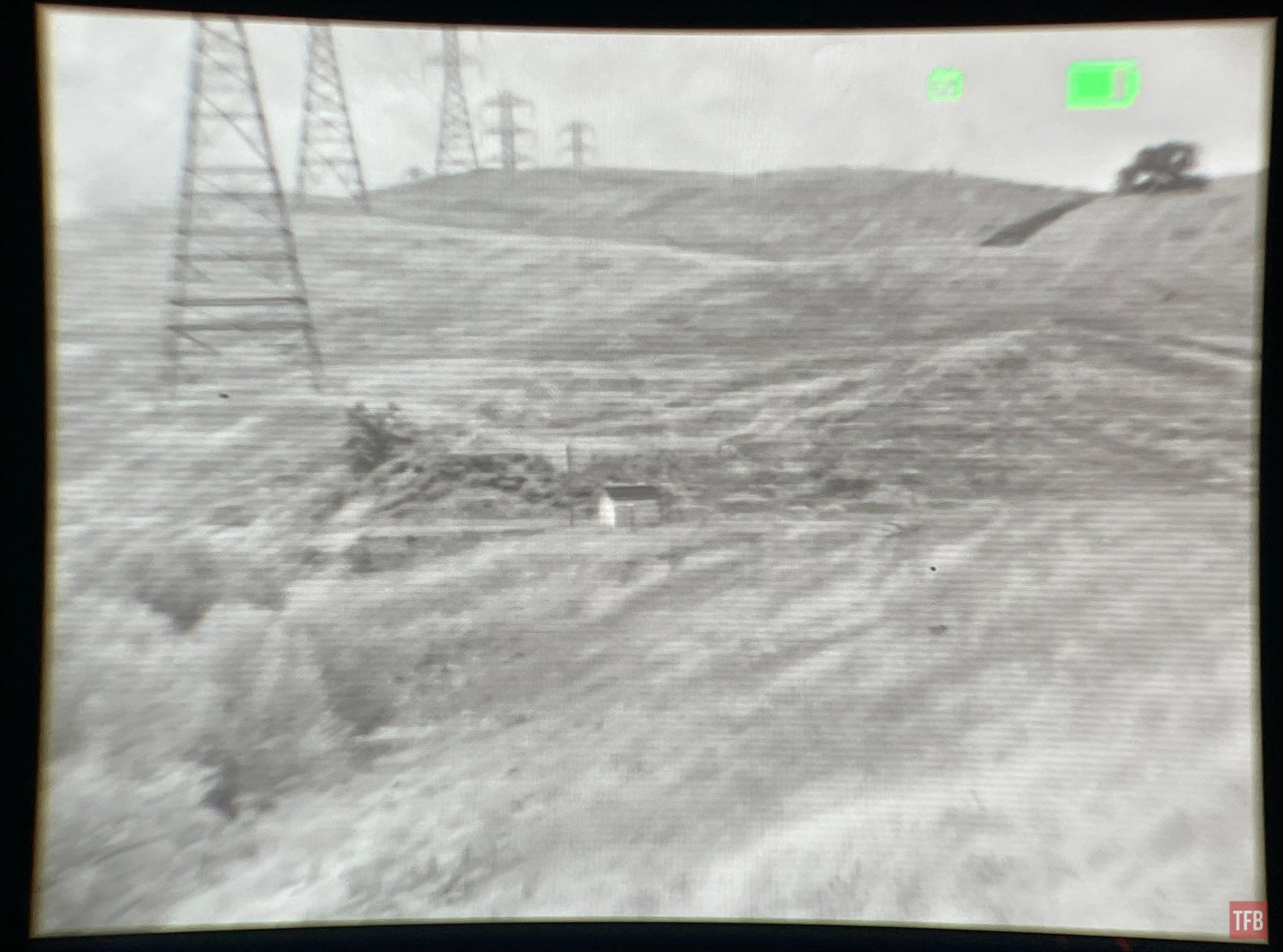
Here is a sample video of the DuskEagle DE916 performance.
Final Thoughts On DuskEagle
Note that the sample I received is pre-production. It is rough around the edges. There was dust and hair inside the eyepiece.

When I opened the case and took the DE916 out, the shutter eyecup had cracked during shipping. It is a poor design that has very thin walls grabbing onto a ring on the eyepiece. The rubber material is rather brittle so it tears easily.
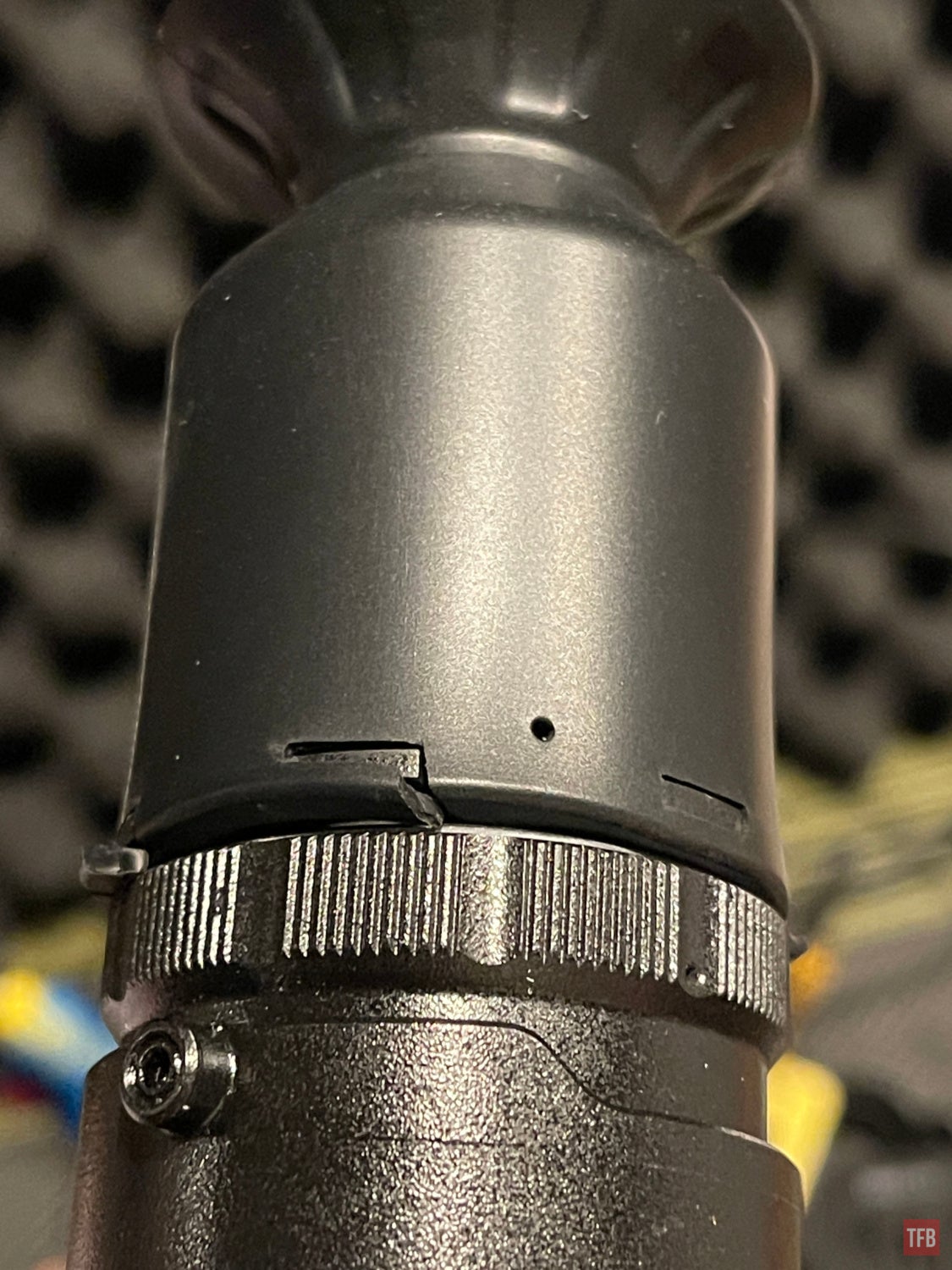
The eyepiece is pretty bad. They need to find something with a more generous eye box and exit pupil. It is too easy to get massive image distortion if you are just slightly off-center. The overall look and feel of the DE916 makes the device seem cheap and I do not mean inexpensive. My contact at DuskEagle says they are projecting a price tag of $6,000-$6,500. That is just too much for this device. For that much money, you can buy a really good thermal weapon sight and not have the HDR issues this has.
The latency is not great. As you saw in the video, the image shakes too much. It suffers from rolling shutters rather badly. I do not know enough about digital systems but I hope these can be fixed with software. They have plans for a helmet-mounted system with better latency. But so far I do not think this technology is ready yet.
I am impressed with the low-light performance. The DE916 was able to show me details even when there was no moon. Not even a SiOnyx Aurora or OPSIN could do that. However, the DE916 image is black and white. I wish it could show color night vision which is one of the main selling points of the SiOnyx devices.
I do see this technology getting better and cheaper in the future. While HDR (High Dynamic Range) is the Achilles heel of digital night vision, the low light sensitivity is getting better than I expected. Hopefully one day someone will crack this problem. But for now, analog night vision is still better in terms of price, battery efficiency and performance.
For more information check out the DuskEagle website.
 Your Privacy Choices
Your Privacy Choices
